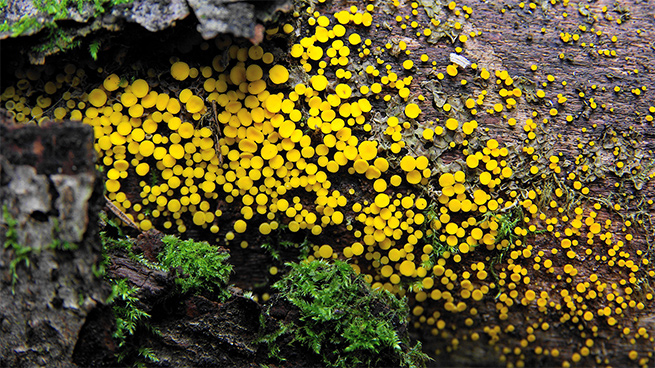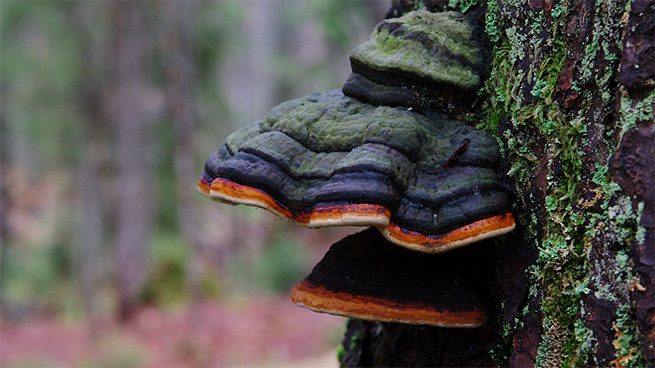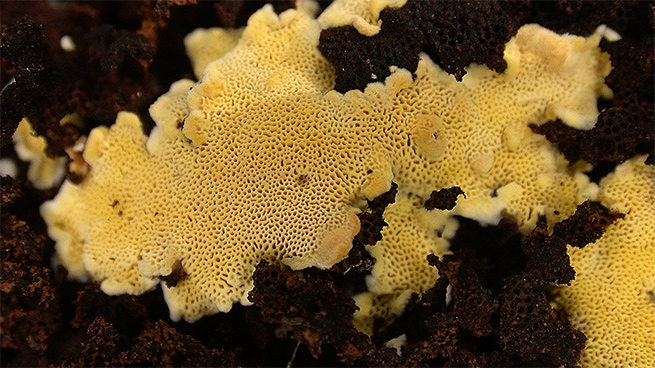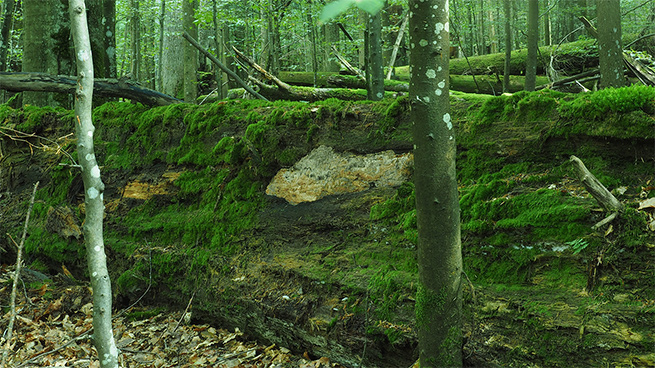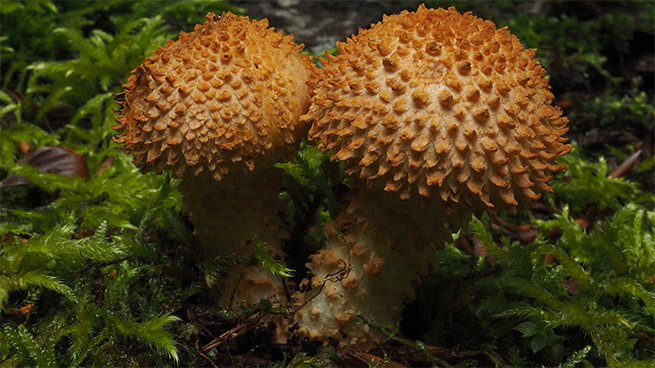
Bayerischer Wald
Fungi
It is still a long way to go. A complete listing of all types of fungi in the Bavarian Forest National Park will still take quite some time to be completed. There are just too many “Schwammerl”, as these creatures are called in Bavaria. More than 2000 ones have already been registered, but experts suspect several hundred additional species. This is due to the fact that many fungi do not form fruitbodies and thus remain hidden for the normal observer.
Four particularly special representatives of this region are:
Red-belted bracket: This tree fungus is almost omnipresent. In this region it can mainly be found on spruces, but also on beech, fir and other hardwoods. The red-belted bracket greatly benefits from the high occurrence of old and dead wood. In addition, this fungus is very important for the system: A number of other species communities only colonize wood that has already been used by red-belted bracket.
Zitronengelbe Tramete: the Zitronengelbe Tramete is a true primary forest fungus too. In Germany, this extremely rare one could only be found within Bavarian Forest National Park for a long period of time. Nowadays there are also documented findings in the Black Forest National Park. Thanks to protection measures, the Zitronengelbe Tramete can spread again.
Pouzar's bracket: A fungus smelling like roses? Yes, that is the bracket, which forms its flat fruiting body only on big dead trees. The national park bears global responsibility for this exceptional occurrence in Germany. All throughout the world, the pouzar's bracket can just be found in six other environments.
Bleicher Schüppling: This photogenic fungus needs long-standing forests to grow - with deadwood of beeches or spruces. Only in National Park Bavarian exists a stable occurrence of this species with semi-natural forests providing its habitat.
